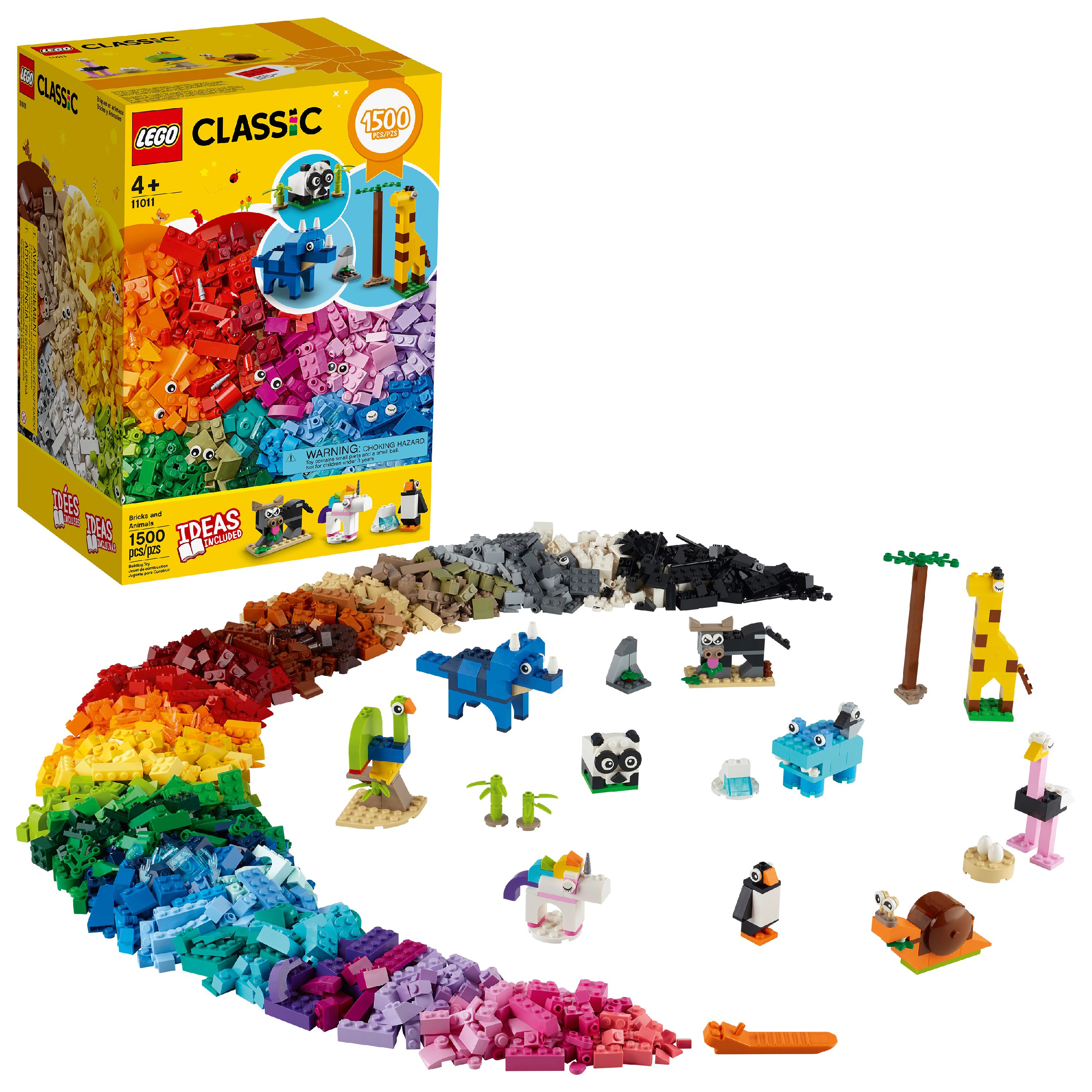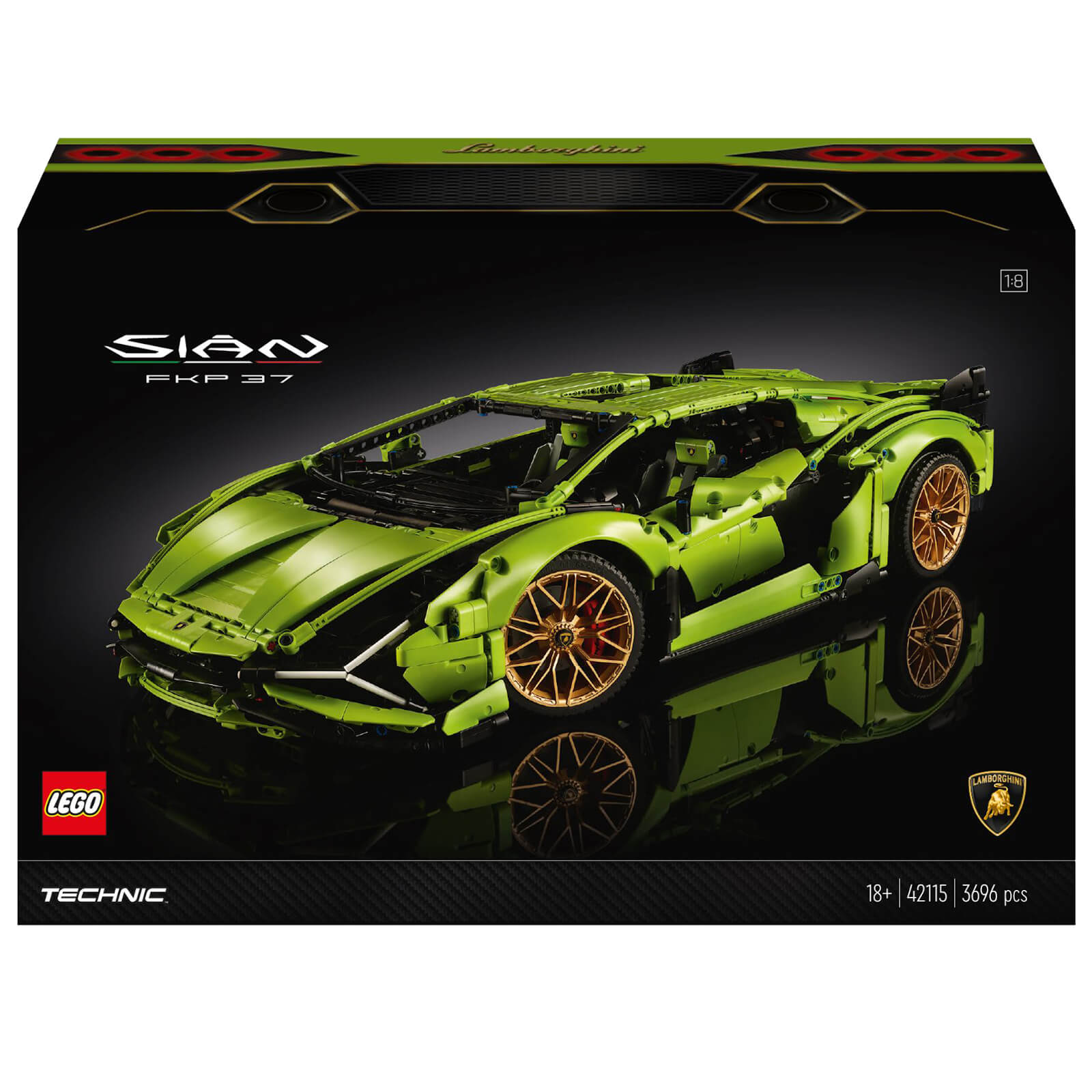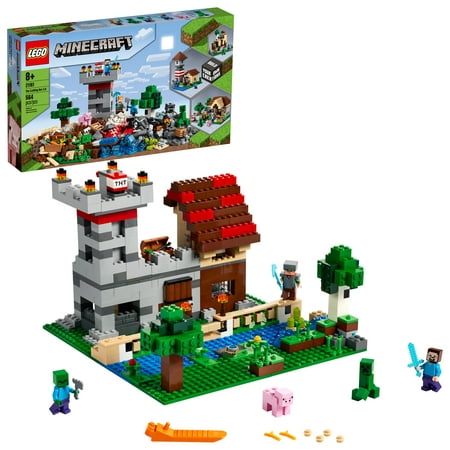LEGO Classic Bricks and Animals 11011 Creative Toy That Builds into 10 Amazing Animal Figures (1,500 Pieces)
An inspiring mix of LEGO bricks and pieces, including 10 easy-to-build animals plus endless free-building fun. A peacock, bull, penguin, dinosaur, unicorn, ostrich, snail, hippo, panda and giraffe – each with its own setting. Easy-to-follow instructions for parents and preschoolers make model assembly quick and simple.
Animal lovers will enjoy endless imaginative play with this LEGO Bricks and Animals set. The 10 amazing animals can be built at the same time, each in its own setting. And, while kids are busy building and playing, they’re also developing key skills. Youngsters will go wild for these easy-to-build LEGO animals. The 10 easy-to-build toys include a peacock with stand, bull, penguin with ice, dinosaur with rocks, unicorn, ostrich with nest, snail, hippo with a bird on its back, panda bear with bamboo trees and a giraffe with a tree. As kids build and rearrange the figures and accessories, they discover the joy of construction and immerse themselves in imaginative role-play. LEGO Classic sets put creative construction and imaginative play into kids’ hands. Once the simple guides and fun models get them building, they’ll never want to stop!
LEGO Classic Bricks and Animals 11011 Creative Toy That Builds into 10 Amazing Animal Figures 1500 Pieces
- Kids can build 10 fun, familiar animals, then get creative using the kit for imaginative, open-ended play
- This creative toy builds into a peacock, bull, penguin, dinosaur, unicorn, ostrich, snail, hippo, panda, giraffe, and absolutely anything kids can imagine
- Boys and girls aged 4 and over will love this versatile, fun and educational. This LEGO set makes an ideal gift for any animal-loving child
- With 1,500 LEGO bricks for kids to get creative with, there’s no need to be restricted to building animals as they develop their construction skills – the possibilities are endless
- LEGO toys meet the highest industry standards , so they are consistent, compatible and connect and pull apart easily – and it’s been that way since 1958
- As well as meeting the highest global safety and quality standards, The LEGO Group drops, squashes, twists, heats, bends, scratches and stretches LEGO bricks and pieces so you can be sure the toy is safe for your child
Additional information
| Brand | LEGO |
|---|---|
| Age Range | 2 – 99 Years |
| Assembled Product Weight | 3.92 lbs |
| Color | Multicolor |
| Gender | Unisex |
| Assembled Product Dimensions (L x W x H) | 10.32 x 14.69 x 8.47 Inches |






by Osvaldo
This is an excellent LEGO CLASSIC collection to stimulate the brain into using its imagination in children as well as adults. This seven year old has gotten very creative. She is loving her new legos.
by Maria
My grandson loved building things with this Lego play set. Spent hours making animals. This item is best for children 5 years and up due to many small pieces. I placed them in zip bags according to color.
by Jason
Did not put in a bag or box. Very unprofessional. Glad its not a Christmas gift and my kid is not nosy. Sarcasm intended.
by Sandy
Bought for grandsons. Rarely find Legos on sale. They’ve been building things every day since we gave to them. Very cute!!! Nice bright COLORS!
by Nazanin
It’s lots of lego for $30 . My daughter loves it.
by Giovana
Awesome! Huge variety of pieces and options for playing. Definitely a great investment.